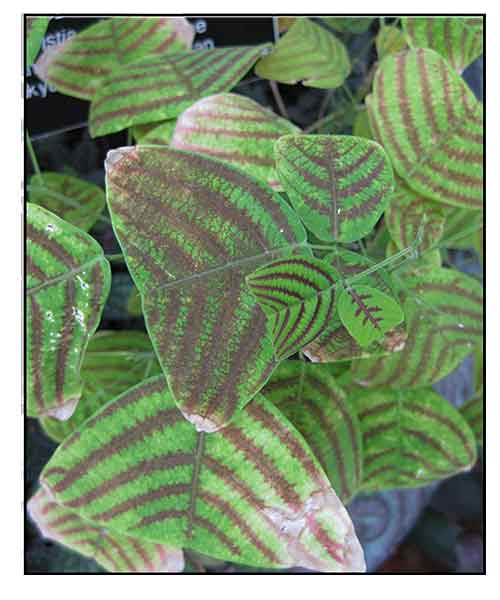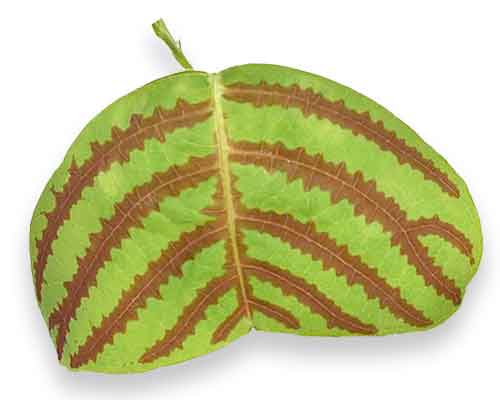
Family • Fabaceae
Paro-paro
Christia obcordata (Poir.) Bakh.f.
GREEN BUTTERFLY PLANT / SWALLOWTAIL
Pu di bian fu cao
| Scientific names | Common names |
| Christia obcordata (Poir.) Bakh.f. | Paro-paro (Tag.) |
| Hedysarum obcordatum Poir. | Butterfly leaf (Engl.) |
| Lourea obcordata (Poir.) Desv. | Butterfly plant (Engl.) |
| Accepted infraspecifics (2) | Butterfly stripe plant (Engl.) |
| Christia obcordata var. obcordata | Butterfly wing plant (Engl.) |
| Hedysarum loureiroi Spreng | Green butterfly plant (Engl.) |
| Hedysarum reniforme Lour. | Iron butterfly (Engl.) |
| Lourea microphylla Wall. | Swallowtail (Engl.) |
| Lourea obcordata var. reticulata Domin | |
| Lourea reniformis DC. | |
| Lourea reniformis var. reticulata (Domin) Domin | |
| Ploca humilis Lour. ex Gomes Mach. | |
| Christia obcordata var. siamensia (Craib) | |
| Lourea paniculata var. siamensia Craib. | |
| Christia obcordata is an accepted species. KEW: Plants of the World Online | |
| Other vernacular names |
| CHINA: Pu di bian fu cao. |
Distribution Constituents Properties Studies Availability |
July 2025
![]()
 |
| Â Â Â Â Â Â Â Â Â Â Â Â Â Â Â Â Â Â Â Â Â Â Â Â Â PHOTOS / ILLUSTRATIONS |
| IMAGE SOURCE: Christia obcordata / Raffi Kojian - Gardenology / CC BY-SA 3.0 / Click on image or link to go to source page / Wikipedia |
| IMAGE SOURCE: Christia obcordata - Leaf close-up / Foliage Factory / Non-commercial use / Image modified / Click on image or link to go to source page / FOLIAGE FACTORY |
Additional
Sources and Suggested Readings |
• |
DOI: It is not uncommon for links on studies/sources to change. Copying and pasting the information on the search window or using the DOI (if available) will often redirect to the new link page. (Citing and Using a (DOI) Digital Object Identifier) |
| Â Â Â Â Â Â Â Â Â Â Â Â Â Â Â Â Â Â Â Â Â Â Â Â Â Â Â Â Â Â List of Understudied Philippine Medicinal Plants |
| Â Â Â Â Â Â Â Â Â Â Â Â Â Â Â Â Â Â Â Â Â New plant names needed The compilation now numbers over 1,500 medicinal plants. While I believe there are hundreds more that can be added to the collection, they are becoming more difficult to find. If you have a plant to suggest for inclusion, native or introduced, please email the info: scientific name (most helpful), local plant name (if known), any known folkloric medicinal use, and, if possible, a photo. Your help will be greatly appreciated. |
• |
 |



